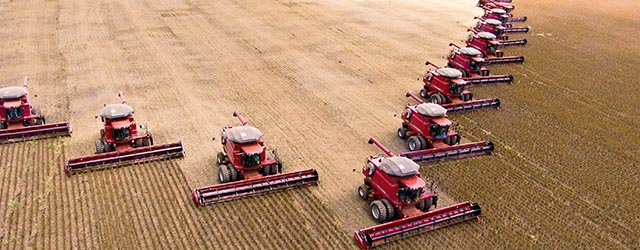In this time of recession, Brazil’s economy is becoming more agribusiness-oriented. The sector generated 23% of Brazilian GDP last year, after 21.4% in 2014, and accounted for 46.3% of total exports.

Despite historical infrastructure challenges, low international prices and scarce credit, the rural economy should once again provide some relief to Brazil’s GDP and trade balance in 2016.
The agribusiness GDP grew 1.8%—the only economic sector to expand in 2015, as Brazil’s overall GDP contracted by 3.8%.
The soya bean harvest reached 97 million tons last year; for 2016, it is expected to grow by almost 5%, to 101.2 million tons. That’s not a remarkable performance when compared with the 2013 and 2014 harvests, both of which were inflated by high commodities prices. But the sector also contributed $60 billion to the country’s $19.7 billion trade surplus in goods, and its share in total exports increased to 46.3%, up from 43% in 2014.
For André Nassar, secretary for agricultural policy, lower international prices were offset by the exchange rate (average 3.33 reais per dollar in 2015). And China was still demanding protein products, which Brazil supplies. These conditions should not be different this year.
“The strong investment in agribusiness between 2011 and 2014 has allowed for improving production, despite all the challenges faced by our farmers,” Nassar said.
For 2016, the government is studying new credit sources for producers, like the Certificate of Agribusiness Receivables, a dollar-indexed bond. Brazil’s rural associations and companies facing high debt leverage are also awaiting more-flexible legislation on foreign investments in land acquisition.
With Brazil projected to be the leading food producer in the world by 2050, according to OECD data, it is attracting Chinese, Saudi and Indian businesses. Japan is eyeing Brazilian main agricultural frontiers in the states of Maranhão, Tocantins, Piauí and Bahia, regions best known by the acronym Matopiba.
“The world is almost begging Brazil to increase its food production by 40% by 2020, from 2010 levels,” said former Agriculture minister Roberto Rodrigues.



